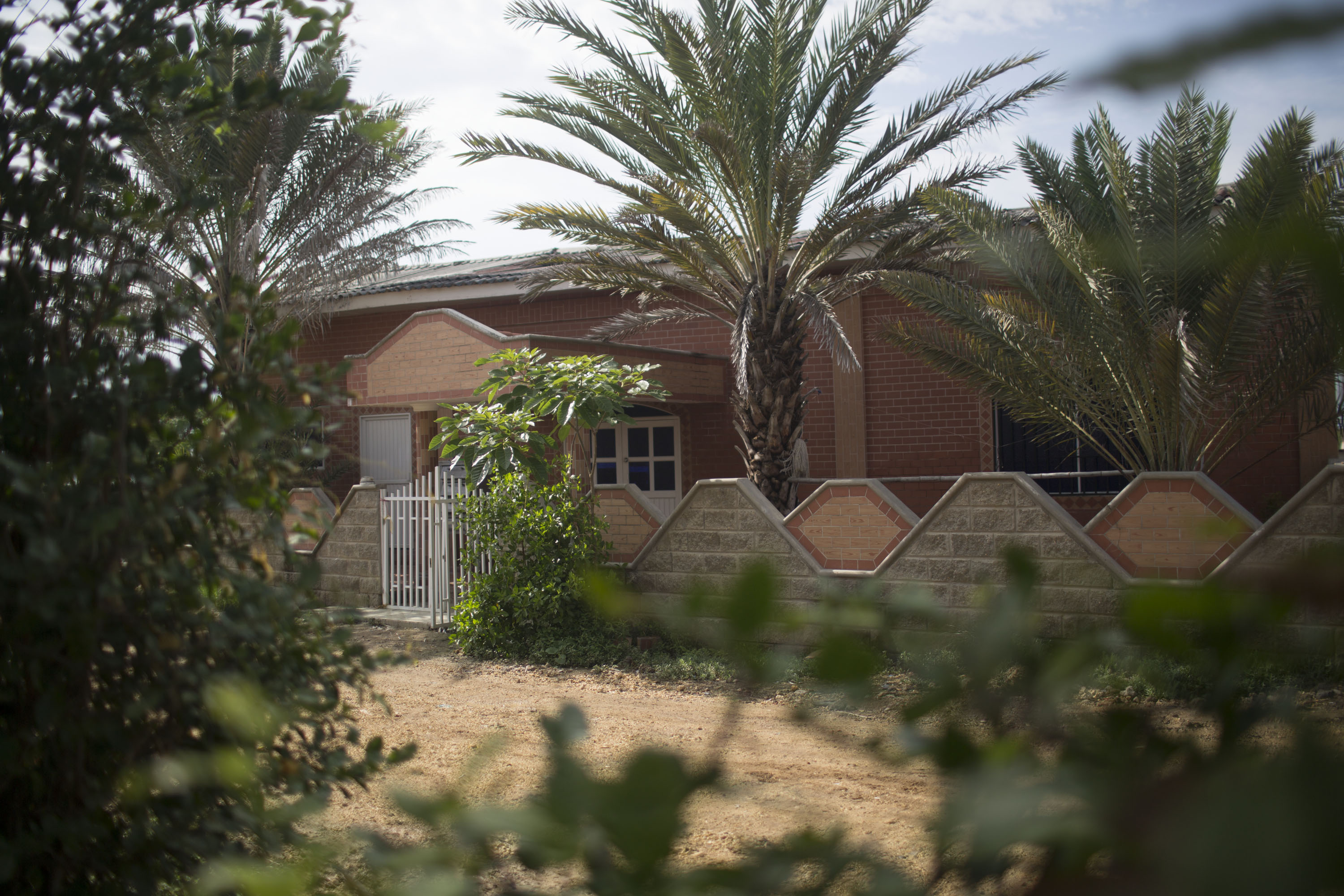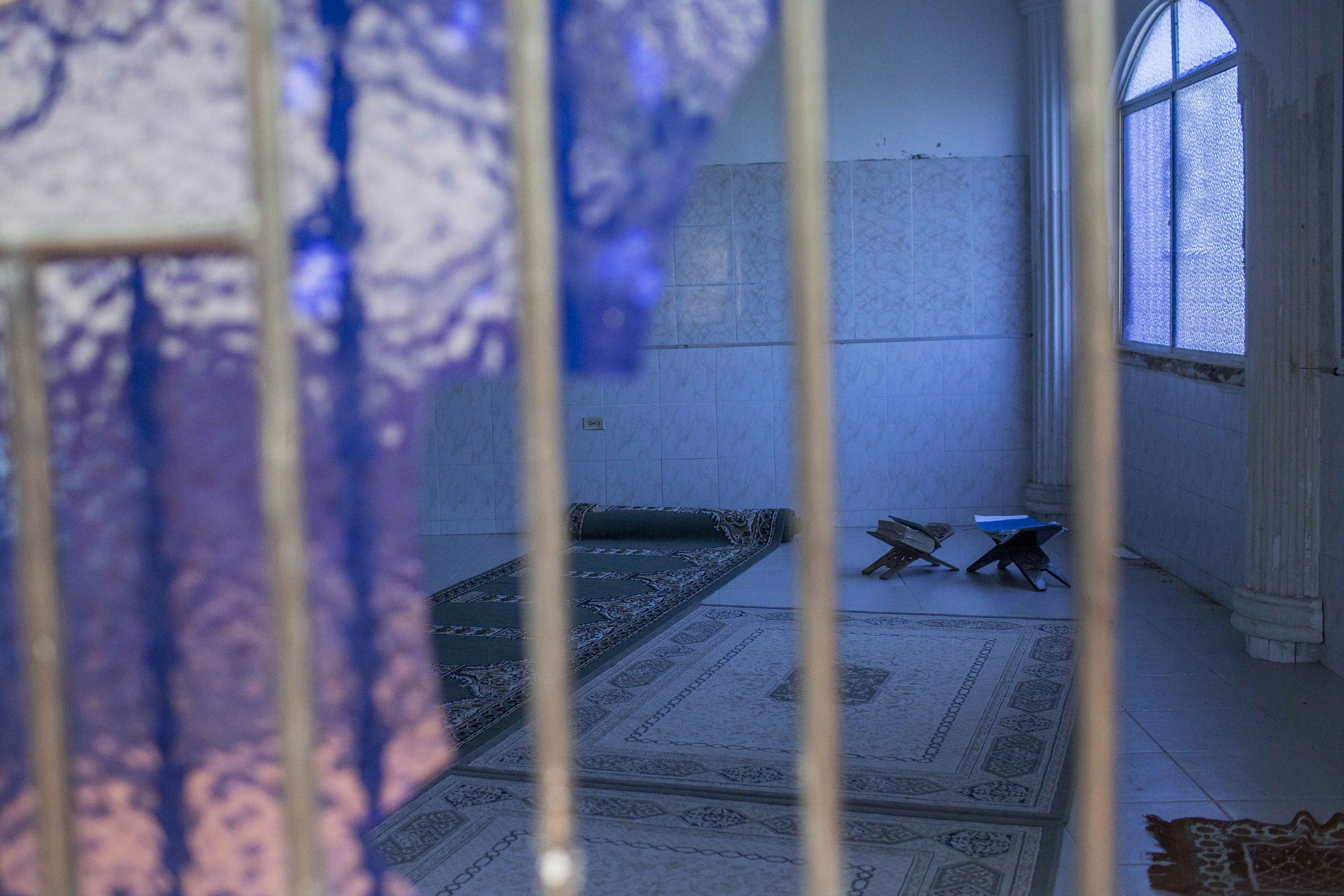Kourosh Ziabari – International Policy Digest: The last thing a tourist would anticipate to unearth in Cartagena de Indias in northern Colombia is a mosque in the middle of an unthinkably impoverished, underprivileged slum on the outskirts of the city close to the beach bordering the Caribbean Sea in La Boquilla.
To understand the notion of being an absolute minority, one can compare the population of Colombia of about 49.8 million to the country’s Muslim citizens: minimally no more than 15,000! So, for a city like Cartagena with about 1.2 million residents, you might need a magnifying glass to detect the Muslims.
The only mosque in Cartagena is situated somewhere that even many locals residing here for so many years couldn’t identify on a map nor had ever heard of. After swinging between the idea of going to Sector Marlinda Calle Segunda in La Boquilla where the mosque was supposedly located, and not opting to go because nobody was sure if a mosque were there at all (we even dialed the phone number attributed to the mosque, and nobody answered) we eventually hit the road and took a taxi to go to the place which turned out to be a wonderland.
The discovery was in the offing. We were three people: me, my friend – who contributed invaluably to this expedition, and the taxi driver who was ready to help. We also had an address which said that there should be a Muslim worshipping house, although with no guarantees.
We inched forward and passed by the luxurious districts and streets to get to a road that would connect us to La Boquilla, known as an inconspicuous fishing and kitesurfing haven 7 kilometers north of Cartagena. On the road, the driver slightly got confused and nearly lost the way, but as we were proceeding slowly on the road, he slammed on the brake at the edge of the thoroughfare and approached the shoulder where two Afro-Colombian women and a child were sitting restfully on their armchairs. My friend asked them if there was a “mezquita” nearby, and they nodded.
He mentioned “mezquita” as “un templo musulman” – a Muslims’ temple, and they immediately realized what we were looking for. They confidently gave us the directions and we headed off to where they had indicated in the coastal area.
The Caribbean Sea was on our left and we drove along the shore where we couldn’t note any sign of opulence and luxury but just semi-ruined cottages, straw-roofed eateries with local men fanning barbeques, garbage, wandering dogs and cats and topless men playing football passionately.
We got to the spot where the indigenous ladies had noted, but nothing was there, only rubbles and remains of deserted buildings. In front of one of the ruins sat two men and a child. The taxi driver asked them if they were aware of the temple’s whereabouts. After a few moments of whispered consultation, one of the men asked the child to get into our cab and take us to the place. He said nothing to us; just signaled with gestures. Amazing! He directed us to the entrance of a bricked, austere, un-domed building guarded by a couple of palm trees that we were told were the Mezquita Abu Bakr. We had arrived!
No one was in the building and the doors were open. In line with the Islamic tradition, we had to take off our shoes before stepping into the main prayer hall. As we were kneeling down to untie the shoelaces, I heard the words “Assalmu Alaykum” being uttered from the distance. I turned around and saw a middle aged, brown man in baggy short pants who appeared to be welcoming us. His Arabic greetings and the crescent moon symbol in his necklace convinced me that the mosque boasted some kind of prayer leader, or a superintendent who would take care of its affairs, and most importantly, would be a Muslim.
The 55-year-old “Imam” who was not actually an Imam or a Sheikh, but fulfilled such a role in the absence of a qualified, full-fledged Imam, had adopted two Islamic names: Ibrahim, as a tribute to his Sunni “brothers,” and Abu-Hassan as a name to appeal to the Shiite brethren. He was born Abercio Mercado and my friend explained that this is a rare and uncommon name in Colombia.
As I began my investigative conversation with Abercio, I surveyed the mosque which was an uncomplicated, flat building lacking the representative features of Islamic architecture. Its outer skin was made of clay bricks. Some of the carpets inside were rolled and lying against the walls, apparently waiting to be washed. The floor was covered in white tiles, and the windows functioned well for letting in light. The construction of the mosque, called Mezquita Bilal Al Habashi, started in 2003 and ended in 2005. It was actually built on his land. He constructed it with the assistance of a Spanish psychology professor, named Miguel, from Andalucía, who was a Muslim, and lived with his family in Cartagena.
So, how did he become a Muslim?
“Thirty years ago, I was a member of the youth wing of the Communist Party and followed the philosophy of the Soviet Union,” Ibrahim explained, talking of his association with the Juventud Socialista. “There was a revolution in Iran in 1979 led by Imam Khomeini, and I took it as an inspiration.”
Ibrahim saw similarities in the Quran and the teachings of socialism, and so he decided to convert to Islam. He went to an Imam named Mustafah in a mosque in Barranquilla and asked him to ordain him. The Saudi Imam invited Ibrahim to take a shower, or conduct the ritual of “Ghusl,” the Christian equivalent of Baptism. Subsequently, he uttered “Shahada,” the confirming testimony that there’s only one God but Allah and Muhammad is the prophet of Allah, and so, he was a Muslim.
He cautiously noted that he is a Sunni, but welcomes the Shiite brothers to his mosque, including the Iranian people. He revealed that even the former Iranian ambassador to Colombia, Abdolrahim Sadatifar, had paid a visit to his small mosque in 2008 and stayed with his family for a couple of nights. Ibrahim believes the Sunni and Shiite people should come together and form a union, or some sort of fraternity. He despises the people who talk about the Shiites in a derogatory and offensive manner.
Does he feel isolated or secluded because of the religion he practices? “No, I don’t feel isolated. It’s been like a process. People have some kind of respect for what I do, and they respect our religion. My purpose is to become a social leader and help the poor children,” the Cartagenero convert explained.
There was something quite amazing about what he has been doing in his small mosque since he founded it, which I still fail to believe in its entirety: he provides one meal per day for 85 children throughout the whole week. It includes 50 meals for the children who live in the slums close to the mosque, and for 35 children who live in the far-flung areas and cannot afford to travel and eat at the mosque. He says if he stops feeding them, these destitute kids may simply be denied their only daily meal.
“What we give them is perhaps the only meal they can have in a whole day,” he lamented.
In a city where the climatic demands and cultural habits allow clothing to be skimpy and tight, I wondered whether there are Muslim women who follow the modest Islamic dressing code, “Hijab,” in Cartagena.
“Yes of course,” he reassured me. “I have a daughter, and my wife also – both of them are Muslims, cover their heads and wear proper Hijab.”
How many Muslims are living in Cartagena? Ibrahim puts the number at 35 and says all of them are Colombian. However, for the daily congregational prayers, usually 8 to 10 people gather in the Abu Bakr Mosque to worship at the same time. He says there are sometimes Malaysian, Indonesian and Pakistani tourists who travel to Cartagena and attend his mosque, as well.
A major concern for every Muslim living in a non-Muslim country is the availability of proper food supplied in accordance with the special dietary regime “Halal.” Do the Muslims of Cartagena de Indias get Halal food, including meats, fish and poultry? What do they eat?
“It’s difficult for us to follow the strict diet and find Halal beef and meat. What we do is that we eat a lot of grains, beans, lentils and we have a swamp and also the sea. So we catch our own fish and have our own cattle and sacrifice them the right way,” he replied.
The Abu Bakr Mosque, whose name comes from one of the prime companions of Prophet Muhammad, is totally dependent on public donations and philanthropy. However, Ibrahim refuses to tell us how much financial assistance he usually gets, whether from the public institutions or the individual contributors interested in promoting Islam in the region.
He emphasizes that the mosques’ activities are aimed at juveniles, and he wants to nourish and feed as many underprivileged children as possible. This way, he promotes the peaceful message of Islam and draws public attention to the altruistic and humane dimension of the religion.
Ibrahim has his own ambitions and future plans, as well. He wishes to build a school for the poor children in the neighborhood somewhere next to the mosque.
The Imam desperately bemoans the fact that some people associate Islam with violence and extremism. He remembers when he was erecting the mosque, some local inhabitants said Muslims are Satanists and drink the blood of animals during their religious rituals! “We are Muslims, not monsters,” he averred.
We did not have too much time to talk to Mr. Abercio Mercado – Ibrahim or Abu-Hassan. The cab was waiting and without it, we would virtually have no way to leave the slums and return to the city. Looking around the tiny yet outstanding mosque, I was enchanted by finding copies of the Holy Quran in Arabic in the bookshelf, which he says he has got from the mosque in Barranquilla. The Imam of Barranquilla mosque usually comes to lead the Friday prayers here in Cartagena.
As we bid farewell to the mosque and Ibrahim, he puts the palm of his right hand on his chest and says some Spanish words which translate, “God bless you, the Iranian brother.”
As we get out of the mosque and make a semi-turn to catch a final glimpse of the facade, we realize that the small child is still in the cab expecting us. He is immensely shy and speaks with the lowest tone possible – only a few intermittent words, but he waited for us all the time so that he could show us the way to exit. My Colombian friend gives him a 2,000-Peso tip. The 2,000-Peso note would be tantamount to pocket money he gets from his father during a whole month. We’re leaving for the Hotel Monterrey with its view over the Torre del Reloj and the walled city, a major shift away from the slums where an undecorated and austere mosque can be described as the most bountiful and lavish building.
This article was originally published on International Policy Digest.


